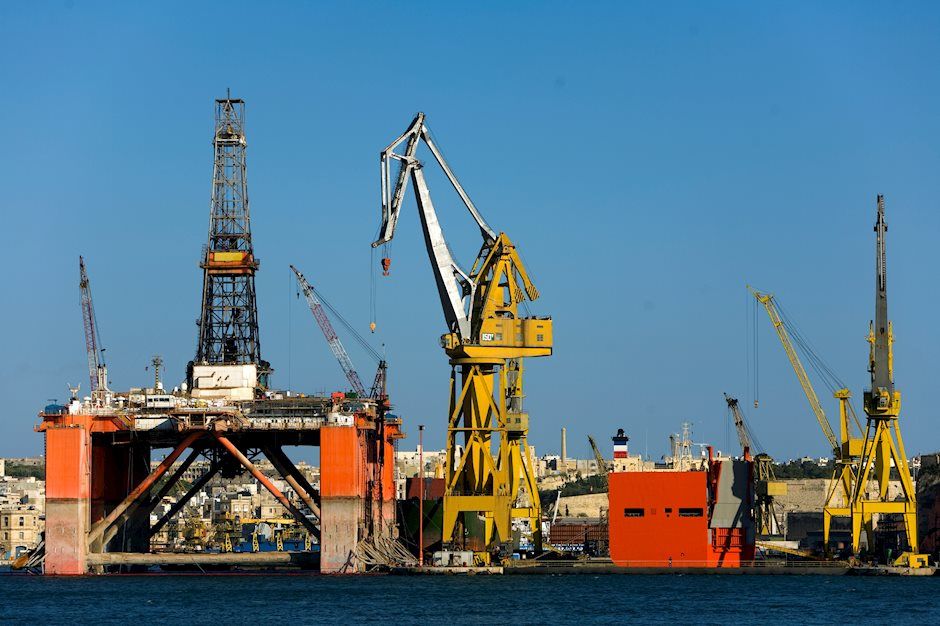WTI consolidates around mid-$74.00s amid US recession jitters/Middle East tensions
- WTI struggles to attract follow-through buying amid mixed fundamental cues.
- Concerns about an economic downturn in China and the US act as a headwind.
- Escalating geopolitical tensions in the Middle East to continue lending support.

West Texas Intermediate (WTI) US crude Oil prices struggle to capitalize on the previous day's strong move up and oscillate in a narrow range during the Asian session on Thursday. The commodity currently trades just above mid-$74.00s, nearly unchanged for the day, and for now, seems to have stalled its recovery from the lowest level since January touched earlier this week.
Investors remain concerned about an economic downturn and slowing demand in China – the world's top oil importer. Adding to this, the incoming softer US macro data suggested that the world's largest economy was slowing faster than initially expected, which is further expected to dent fuel demand. This, in turn, holds back traders from placing aggressive bullish bets around Crude Oil prices and caps the upside, though geopolitical risks could act as a tailwind.
Meanwhile, a possible attack by Iran, and its allies, in retaliation to the assassination of Hamas chief Ismail Haniyeh in Tehran and the subsequent Israeli response could lead to a broader conflict in the Middle East. This keeps the risk of supply disruptions from the key Oil producing region and continues to offer some support to Crude Oil prices. Adding to this, a steep draw in US crude stockpiles should contribute to limiting any meaningful downside for the black liquid.
In fact, the US Energy Information Administration (EIA) reported on Wednesday that crude inventories fell for a sixth week in a row by 3.7 million barrels, more than market expectations. That said, Chinese trade data released the previous day showed that July's daily crude oil imports fell to the lowest level since September 2022. The mixed fundamental backdrop makes it prudent to wait for strong follow-through buying before confirming that the commodity has bottomed out.
WTI Oil FAQs
WTI Oil is a type of Crude Oil sold on international markets. The WTI stands for West Texas Intermediate, one of three major types including Brent and Dubai Crude. WTI is also referred to as “light” and “sweet” because of its relatively low gravity and sulfur content respectively. It is considered a high quality Oil that is easily refined. It is sourced in the United States and distributed via the Cushing hub, which is considered “The Pipeline Crossroads of the World”. It is a benchmark for the Oil market and WTI price is frequently quoted in the media.
Like all assets, supply and demand are the key drivers of WTI Oil price. As such, global growth can be a driver of increased demand and vice versa for weak global growth. Political instability, wars, and sanctions can disrupt supply and impact prices. The decisions of OPEC, a group of major Oil-producing countries, is another key driver of price. The value of the US Dollar influences the price of WTI Crude Oil, since Oil is predominantly traded in US Dollars, thus a weaker US Dollar can make Oil more affordable and vice versa.
The weekly Oil inventory reports published by the American Petroleum Institute (API) and the Energy Information Agency (EIA) impact the price of WTI Oil. Changes in inventories reflect fluctuating supply and demand. If the data shows a drop in inventories it can indicate increased demand, pushing up Oil price. Higher inventories can reflect increased supply, pushing down prices. API’s report is published every Tuesday and EIA’s the day after. Their results are usually similar, falling within 1% of each other 75% of the time. The EIA data is considered more reliable, since it is a government agency.
OPEC (Organization of the Petroleum Exporting Countries) is a group of 13 Oil-producing nations who collectively decide production quotas for member countries at twice-yearly meetings. Their decisions often impact WTI Oil prices. When OPEC decides to lower quotas, it can tighten supply, pushing up Oil prices. When OPEC increases production, it has the opposite effect. OPEC+ refers to an expanded group that includes ten extra non-OPEC members, the most notable of which is Russia.
Author

Haresh Menghani
FXStreet
Haresh Menghani is a detail-oriented professional with 10+ years of extensive experience in analysing the global financial markets.

















